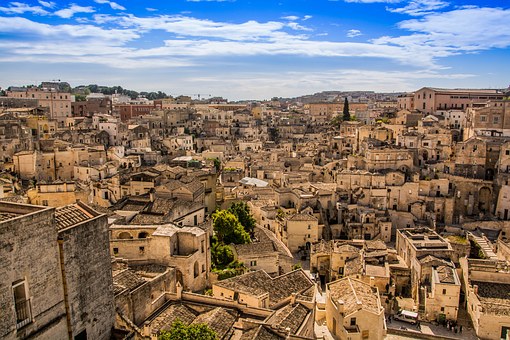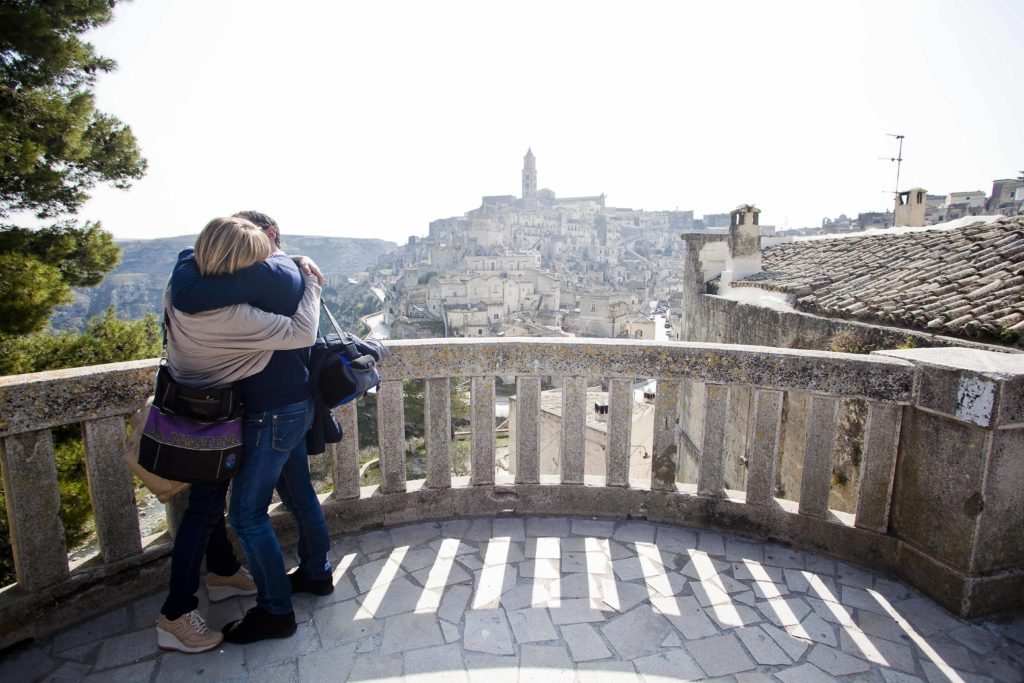Matera: the city of stones and culture
GRAND TOUR BLOG | 24 June 2020

Matera: the city of stones and culture

Matera: unique city
Matera it is a splendid Lucanian city known for the Sassi. Famous in Italy of its kind with a very important history but also with few awards.
His houses that have been excavated in the limestone rock they create a very suggestive landscape. The scenery is reminiscent of the landscape of Palestinian cities from the time of Jesus. Indeed, Mel Gibson in 2004, he chose this area for the set of his film “Christ's passion”.
From the 1993 has been named Heritage of’ Unesco and from 2019 and the Capital of European Culture.
It overlooks the gorge created by the Gravina stream. On one side there is the area of Sassi (Barisano e Caveoso) and on the other the Civita: both make up the ancient part of the city.
Instead on the other side there is today's area that arose in the second half of ‘900. In the midst of all this there is Matera born between ‘700 and l’ ‘800 during the best period that of growth.
I Sassi it is to Civita which are the two best known areas tell of a very ancient story born in Palaeolithic which continues to this day.
The history of the Sassi
Between IX and l 'XI sec., the installation of the rock civilization of eastern origin was very important, who redefined the neighborhood and left many testimonies of rock churches: including the church of San Giovanni in Monterrone, Santa Maria De Idris, San Pietro Barisano e Saint Lucia alle Malve.
Equally interesting during a city tour are the Romanesque cathedral, which houses a fresco of the Madonna della Bruna, patron of the city, celebrated on 2 July according to a tradition of over six hundred years, the church of San Francesco d'Assisi and the church of San Domenico.
What happened in times gone by
The houses were all grouped together in a single space creating an overcrowding since ten people were also living in a house of a few centimeters with truly tragic sanitary conditions and a very high infant mortality rate.
Carlo Levi he pointed it out in one of his novels “Christ Stopped at Eboli” (1945) to make this problem known to Italians and politicians. Shortly thereafter something changed!
In 1952, A. De Gasperi, signed the law for it Displacement of Matera, which also led to the construction of the contemporary city. The citizens were moved and the stones cleaned up.
Here Matera to be the national shame had his revenge.
Matera today
Today it is possible to visit the interior of the houses that are set up so you can know what the organization of life was over time, starting from the first occupation in the Neolithic period up to the displacement in the 1950s.





